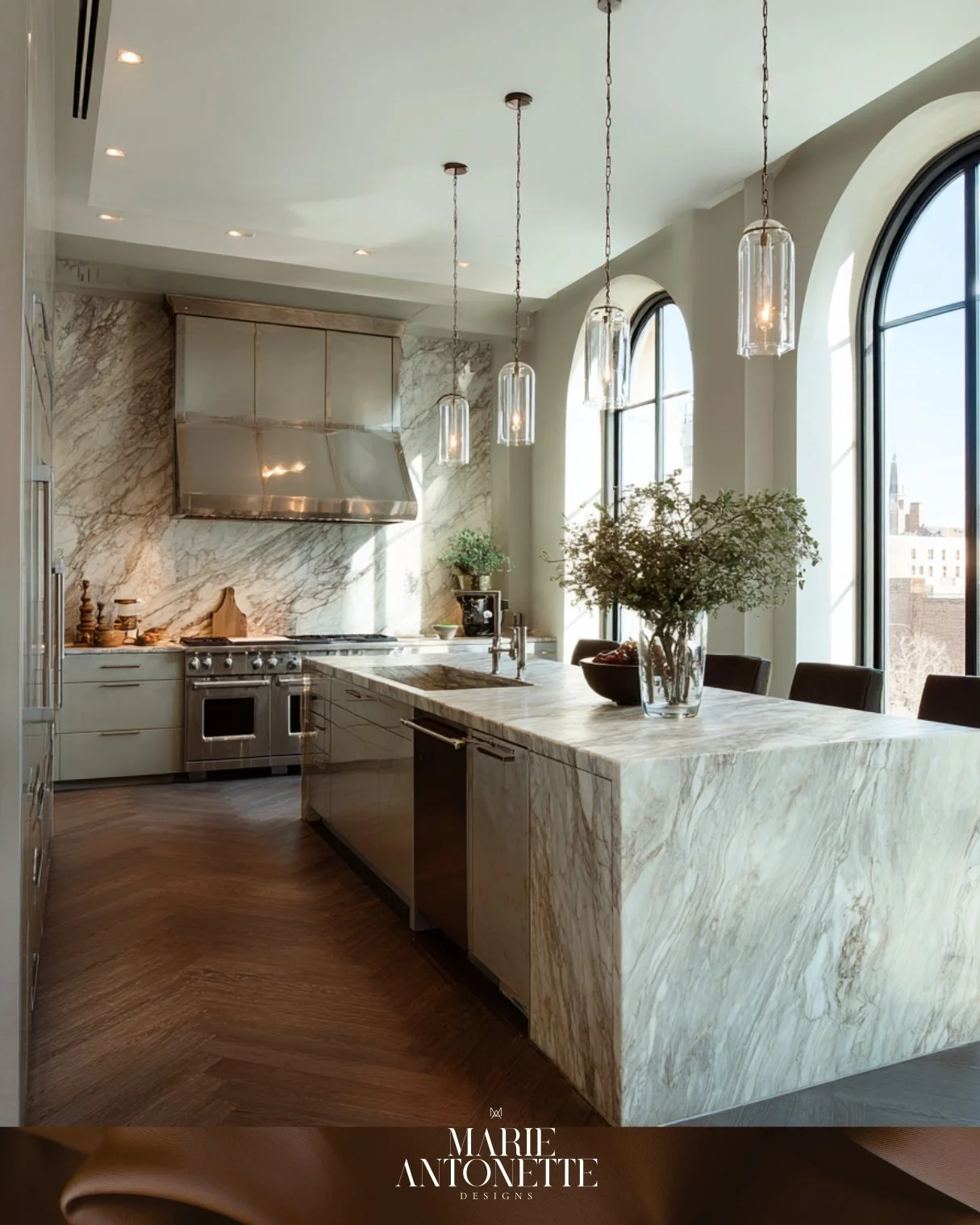How to Budget for Your Kitchen Renovation Like a Design Insider
A kitchen renovation is one of the most transformative updates you can make to your home — not just in form and function, but in long-term property value. As a luxury interior designer, I’ve guided countless clients through the renovation journey, and the biggest determining factor of success is always the same: a smart, strategic budget.
Whether you’re upgrading a pied-à-terre in Chicago’s Gold Coast or revamping a family kitchen in Dubai, it pays to approach your kitchen renovation with both creativity and financial clarity.
1. Begin with a Needs-Driven Audit (Not a Pinterest Board)
Before dreaming up marble islands or fluted cabinetry, ask yourself: What isn’t working now?
Start with a functional assessment. Are your appliances outdated? Is storage insufficient? Is your layout inefficient for how you live and cook?
Trade Tip:
Designers often conduct what's called a Zone Mapping Exercise — breaking your kitchen into zones (prep, cook, clean, store) to assess flow and friction points. This pre-planning process helps avoid costly layout regrets down the line.
2. Set a Strategic, Tiered Budget
Rather than lumping all costs into a single number, create budget tiers:
Essentials (plumbing, electrical, cabinetry)
Enhancements (countertops, lighting, appliances)
Aesthetic Elevators (hardware, backsplashes, custom finishes)
Include a 15–20% contingency for surprises — especially in older buildings where opening a wall may uncover outdated wiring or plumbing.
Trade Tip:
Don’t forget to budget for permit costs, material freight, designer/vendor retainer fees, and if you live in a condo, building insurance requirements and time restrictions for tradespeople.
3. Invest Where It Counts
Not all upgrades yield equal return — or experience.
If you're deciding between a designer range and custom cabinetry, consider this:
Cabinetry = 30–40% of visual real estate in a kitchen. It’s where luxury is seen and felt.
Trade Tip:
If you want impact without the cost of full custom, semi-custom cabinetry with upgraded interior fittings (like soft-close slides, integrated utensil trays, and hidden outlets) gives a polished feel with less spend.
4. Smart Swaps: Where to Save Without Sacrificing Style
Quartz over marble: similar elegance, far easier maintenance
Porcelain slab backsplashes: gives the look of stone, without the stone upkeep
Luxury vinyl flooring: waterproof, resilient, and now nearly indistinguishable from wood or stone
Trade Tip:
Explore trade-only surplus sources or designer outlets like RH Outlet, ProSource, or local stone yards for slabs with minor imperfections (often hidden post-fabrication).
5. Refacing Isn’t a Cop-Out — It’s Smart Design
If the bones of your kitchen are solid, consider cabinet refacing or refinishing. With professional lacquering and new hardware, existing cabinets can feel entirely bespoke.
Trade Tip:
Designers often upgrade cabinet interiors during refacing — like converting base cabinets into pull-out drawers or installing LED strip lighting for a touch of modern luxury.
6. Know When to DIY — and When Not To
Doing it yourself might feel like a money-saver, but mistakes can compound quickly in kitchens. Tilework, plumbing, and millwork are best left to licensed pros — especially when resale value is at stake.
Trade Tip:
Hiring a designer with trade accounts can often save you money overall by accessing discounts not available to the public — and ensuring the vision is executed without compromise.
Final Thought:
Your kitchen isn’t just a workspace — it’s the heart of your home.
It deserves more than impulse purchases and guesswork. With a clear plan, intentional budgeting, and design guidance rooted in real-world experience, you can create a kitchen that is not only functional and beautiful — but truly enduring.
📎 Need help planning your renovation?
Explore our other expert guides on high-end interiors, global design inspirations, and investment-driven renovations:
👉 Visit the Design Blog


